Results 10,761 to 10,770 of 12096
Thread: Anandtech News
-
-
09-02-20, 11:15 AM #10762
Anandtech: 3DFabric: The Home for TSMC’s 2.5D and 3D Stacking Roadmap
Interposers. EMIB. Foveros. Die-to-die stacking. ODI. AIB.TSVs. All these words and acronyms have one overriding feature – they are all involved in how two bits of silicon physically connect to each other. At the simple level, two chips can be connected through the printed circuit board – this is cheap but doesn’t allow for great bandwidth. Above this simple implementation, there are a variety of ways to connect multiple chiplets together, and TSMC has a number of these technologies. In order to unify all the different names it gives to its variants of its 2.5D and 3D packaging, TSMC has introduced its new overriding brand: 3DFabric.
More...
-
09-02-20, 02:59 PM #10763
Anandtech: Schenker VIA 14: 14-inch Tiger Lake Magnesium Notebook, with 28W Version I
With Intel lifting the lid on its new Tiger Lake mobile processors today, a number of vendors are announcing their upcoming notebooks. Schenker Technologies, a German brand known in Europe for its Xtreme Mobile Gaming (XMG) line of products and custom Clevo implementations, is one of the first to describe an upcoming 11th Gen Intel Tiger Lake portable notebook as part of its VIA line. With a lightweight magnesium chassis, the VIA 14 uses up to a Core i7, a 73 Wh battery, and a one watt display to give 14+ hours of battery life.
The key thing to note about Tiger Lake is the increase in both CPU and GPU performance compared to the previous generation Intel notebook processors. We still have four cores, but the Tiger Lake cores can now boost a lot higher due to Intel’s improved 10nm SuperFin process (which you can read about here). Tiger Lake is Intel’s first product with its new Xe-LP graphics design as well, promising 2x the graphics performance of the last generation. The goal with these processors is to enable a nice and comfortable experience in a range of designs from ultra-premium to the run-of-the-mill.
The Schenker VIA 14 sits in that ultra-premium market. Using a lightweight magnesium chassis, the kind that we only ever see on the expensive end of the market, the VIA 14 is claiming only a 1.1 kg (2.4 lbs) weight despite also putting a 73 Wh battery inside. Personally I find this a bit mind blowing, if I’m honest. A 73 watt-hour battery in a 1.1 kg notebook is insane, and they are also claiming a 90% charge in 90 minutes. Not only that, but there’s also one of Intel’s approved low-power one-watt displays, enabling 14+ hours of active battery life according to the press release when at 150 nits.
Tiger Lake also enables PCIe 4.0 storage, native Thunderbolt 4, and Schenker will also support an optional LTE modem for business customers. Despite being lightweight, the big battery means the notebook is 16.5 mm, but with a 14-inch display is still very portable. The ports with the VIA 14 include a HDMI 2.0b connection, a USB 4.0/Thunderbolt 4 Type-C with DisplayPort 1.4b support, two USB-A 3.2 ports, a microSD card reader and a combination headphone jack. Native connectivity is through Wi-Fi 6, and as mentioned, an LTE add-on is supported.
For storage, the VIA 14 has support for two M.2 SSDs, one at PCIe 4.0 and the other at PCIe 3.0. Memory is DDR4-3200, with 8 GB coming pre-soldered and an 8 GB SO-DIMM module coming as standard, however up to 40 GB total memory can be supported. The 14-inch display has a maximum brightness of 300 nits and provides 98% coverage – Schenker says the special ‘one-watt’ display applies when running at 150 nits. The display also opens to a 180-degree hinge.
Prices for the VIA 14 will start at €1,246.75 (that includes 16% VAT) at the end of October. The base model features the Core i7-1165G7, 8 GB DDR4, and a 250 GB Samsung 860 Evo SSD, and models with the Core i5-1135G7 will follow later.
Schenker also included a preview of what is to come, simply stating that a version with a 28 W Tiger Lake processor paired with an NVIDIA graphics card will be ‘coming soon’.
Related Reading- Intel’s 11th Gen Core Tiger Lake SoC Detailed: SuperFin, Willow Cove and Xe-LP
- Intel Schedules Tiger Lake Architecture Presentation For August 13th, Launch on September 2nd
- Hot Chips 2020 Live Blog: Intel's Tiger Lake Mobile CPU (12:30pm PT)
- Intel Thunderbolt 4 Update: Controllers and Tiger Lake in 2020
- I Ran Off with Intel’s Tiger Lake Wafer. Who Wants a Die Shot?
More...
-
09-02-20, 02:59 PM #10764
Anandtech: Intel Launches 11th Gen Core Tiger Lake: Up to 4.8 GHz at 50 W, 2x GPU wit
In August, Intel ran one of its rare Architecture Days where the company went into some detail about its upcoming Tiger Lake processor. This included target markets, core counts, graphics counts, a look into some of the new acceleration features, and a promise of a product launch later in the year. That product launch is now here, and Intel is providing Tiger Lake with speeds and feeds, providing detail and expected benchmark performance for Intel’s next generation of notebook-class devices.
More...
-
09-03-20, 12:15 PM #10765
Anandtech: Arm Announces Cortex-R82: First 64-bit Real Time Processor
Arm is known for its Cortex range of processors in mobile devices, however the mainstream Cortex-A series of CPUs which are used as the primary processing units of devices aren’t the only CPUs which the company offers. Alongside the microcontroller-grade Cortex-M CPU portfolio, Arm also offers the Cortex-R range of “real-time” processors which are used in high-performance real-time applications. The last time we talked about a Cortex-R product was the R8 release back in 2016. Back then, the company proposed the R8 to be extensively used in 5G connectivity solutions inside of modem subsystems.
Another large market for the R-series is storage solutions, with the Cortex-R processors being used in HDD and SSD controllers as the main processing elements.
Today, Arm is expanding its R-series portfolio by introducing the new Cortex-R82, representing the company’s first 64-bit Armv8-R architecture processor IP, meaning it’s the first 64-bit real-time processor from the company.
To date, previous generation R processors were based on the predecessor Armv7-R or ArmV8-R 32-bit architecture, such as the Cortex-R52. This was for years still fine and sufficient for the use-cases in which these processors were deployed. In modern products however, we’re seeing designs in which larger memory addressing is becoming necessary. Modern SSDs right now for example routinely use up to 2GB of DRAM memory on their controllers, which comes near to the 32-bit 4GB memory addressing limit of the R8 CPUs.
The new Cortex-R82 enhances the core to enable up to a 2x performance improvement over the R8, uses a wider physical address space up to 1TB which is coherent with the rest of the system.
Arm currently doesn’t divulge much about the microarchitecture of the R82 and how it differs from the R8, but we imagine there to be some significant changes with the shift to the Armv8-R architecture.
An important addition here from the architecture and µarch side is the optional inclusion of NEON units for SIMD processing, including new dot-product instructions. This would enable for higher performance parallel processing compute capacity on the processor itself, allowing customers such as SSD-controller designers more flexibility as to their designs.
Another big change to the microarchitecture is the inclusion of an MMU, which allows the Cortex-82 to actually serve as a general-purpose CPU for a rich operating system such as Linux. This is actually quite a huge change in regards to the target market possibilities of the -R series going forward if the processor can run its own OS all by itself.
Arm’s product presentations focus on storage controllers, able to run both real-time workloads like they have been until now, but add in a rich OS for more complex algorithms and higher-level applications that aren’t as feasible on a bare-metal and real-time operating system.
A chip designer for example can tape-out a drive controller with multiple R82 cores (the design scales up to a 8-core cluster), and flexibly change the processing resources between the real-time application and the higher-level computation workload.
As the storage market evolves, one of the biggest requirements we’ve seen from our partners is flexibility. The new features of the Cortex-R82 processor give partners the possibility to design multi-core implementations of up to 8 cores, and adjust the types of workload running on the storage controller based on external demands in software. For example, parking lots will regularly use video surveillance to recognize license plate information which is later used for billing. During the day vehicle registration plate data is collected, meaning most cores are being used for intensive storage. At night, these cores will be used to process the data for billing and will adjust to carry out the data analysis and machine learning needed. As storage controllers are becoming more diverse to address different markets and features, Cortex-R82 delivers an architecture to provide this extreme flexibility – reducing costs and time to market.Arm states that 85% of current storage solutions use Cortex-R processors, so the new R82 likely will represent a big jump in performance and open new possibilities for vendors to design new differentiating features in future designs.
Related Reading:- ARM Announces the Cortex-R52 CPU: Deterministic & Safe, For ADAS & More
- ARM Announces New Cortex-R8 Real-Time Processor
- ARM Announces ARMv8-M Instruction Set For Microcontrollers – TrustZone Comes to Cortex-M
More...
-
09-03-20, 12:15 PM #10766
Anandtech: Netgear Updates Orbi Pro Lineup with Wi-Fi 6 AX6000 Tri-Band Model
Mesh networking kits / Wi-Fi systems have emerged as key revenue streams for networking equipment vendors in the consumer space. In mid-2017, Netgear brought over this strategy to the SMB / SOHO space with the Orbi Pro 802.11ac (Wi-Fi 5) tri-band Wi-Fi system. Since then, Wi-Fi 6 deployment in the consumer market has achieved critical mass, with almost all modern smartphones and notebooks equipped with support for 802.11ax technology. Most vendors in the enterprise space now have Wi-Fi 6 access points (APs). Netgear's own foray into the space started with the introduction of the WAX610 series last month. Today, they are launching the second-generation Orbi Pro with Wi-Fi 6 capabilities.
Similar to the last-gen Orbi Pro, the new Wi-Fi 6 model (SXK80 for the kit, with a single SXR80 router and a SXR80 satellite) borrows the internal hardware components of the consumer Orbi Wi-Fi 6 (RBK852), modifies the industrial design and reorients the internal antennae for better stability (rather than the peak performance aspect that is important for the consumer model). The 2.5 Gbps port is configured by default for WAN duties (to go along with Netgear's recently introduced CM2000 cable modem), but it can be reconfigured for LAN duties also. Two of the 1G LAN ports can also be link-aggregated. The firmware is also tweaked for features required by SOHOs and SMBs. Management is done via the Insight app, rather than the Orbi app used by the consumer version. The product includes a free 1-year subscription to the Insight Cloud Management service. However, it must be noted that Insight app-based management is not a must for the device. It can be configured using a web UI on the local network also.
In terms of improvements over the existing Orbi Pro, the new version supports 1024QAM in 5 GHz, Wi-Fi 6 in both bands, and an increase in the number of radio streams from 8 to 12. Wi-Fi 6 also brings bi-directional MU-MIMO. The new Orbi Pro also supports OFDMA for better channel efficiency and the Target Wait Time feature for improved power efficiency on the client side. On the security side, WPA3 is supported and the unit is Wi-Fi certified Enhanced Open at launch. WPA3-Enterprise is scheduled to become available in a later firmware release.
Firmware features that are specific to the Orbi Pro (and not directly supported in the consumer Orbi) include better network separation and client isolation. The SXK80 supports four distinct SSIDs, each with a dedicated VLAN. Client isolation allows devices within a SSID to have better privacy and security by allowing upstream communication only (not visible to other devices connected to the same SSID).
One of the key differentiators in the Orbi Pro SXK80 is the usage of Wi-Fi 6 in the 2.4 GHz band also. Most of the entry-level APs in the Wi-fi 6 space forsake this (and operate at 802.11n speeds in that band) to hit lower price points. On this aspect, the Orbi Pro happens to be more future-proof, as client support for 2.4 GHz Wi-Fi 6 continues to improve with the resolution of various interoperability issues. Netgear refers to micro-businesses as the target for the Orbi Pro, and prefers full-fledged SMBs to go the separate gateway / switch / access point route. Micro-businesses and SOHO setups are likely to benefit more from systems with a robust dedicated wireless backhaul such as the Orbi Pro, as these setups often have to do without Ethernet cables inside walls and/or ceilings for a wired backhaul.
The Netgear Orbi Pro WiFi 6 Tri-band Mesh System (SXK80) comprising of one router and one satellite is available for purchase today at $770 in the US, with European availability later this quarter. Additional satellites are priced at $420 each, with multi-satellite kits offering a discount at $1100 (router and two satellites) and $1490 (router and three satellites).
Gallery: Netgear Updates Orbi Pro Lineup with Wi-Fi 6 AX6000 Tri-Band Model





More...
-
09-03-20, 06:41 PM #10767
Anandtech: Keeping it Pure, be quiet! Pure Loop Series, Up to 360 mm AIOs
be quiet! is one of the most widely known hardware manufacturers in Germany and across Europe, with ranges including CPU cooling, chassis, and case fans. Adding to its range of CPU coolers, be quiet! has unveiled its latest series of AIO coolers, the Pure Loop. Available with multiple radiator sizes spanning from 120 mm to 360 mm, be quiet! looks to aggressively target enthusiasts and performance to keep things running nice and cool.
Back in 2016, be quiet! unleashed its first-ever series of AIOs, the Silent Loop. Fast forward four years from then, and be quiet! has opted for a different route, dropping Alphacool for its pump OEM, and opted for an undisclosed brand. The new Pure Loop AIO CPU coolers are available in four different sizes, 120, 240, 280, and 360 mm.
The biggest change in design comes via the pump, with a new double decoupled pump. be quiet! claims this allows the AIO to operate quieter and with fewer vibrations than the previous Silent Loop series. Each of the models share the same 27 mm thick radiator, albeit in different sizes to accommodate the Pure Wings 2 PWM fans. The 120 mm comes with a single 120 mm fan, the 240 mm with two 120 mm fans, the 280 mm with two 140 mm fans, and the largest, the 360 mm with three 120 mm fans.
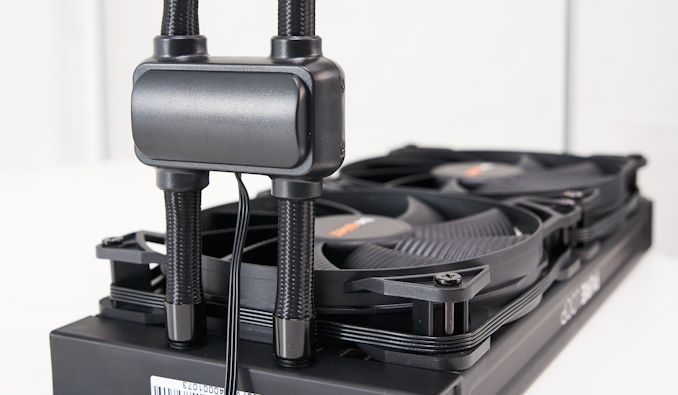
The cold plate on the CPU block is nickel-coated copper which means users can use liquid metal thermal compound for better performance, although be quiet! does supply a small tube of its thermal paste in the accessories bundle. The block itself looks elegant and includes white LEDs surrounding the aluminum styled front cover, something more classical instead of RGB LEDs. Another 'cool' feature is the design allows users to top up the fluid with easy to access fill ports, meaning longevity is a big factor, with a supplemental bottle of fluid in the bundle. It does come pre-filled for users to install straight away.
Touching on the compatibility, be quiet! doesn't list the supported socket types, but it's likely to support AMD's AM4 socket, with support for the latest Intel LGA1200 as well as LGA115x sockets. be quiet! themselves recommend the 120 mm for users with AMD Ryzen 3 and Intel Core i3 processors, the 240 mm for Ryzen 5/Core i5, the 280 mm for Ryzen 7/Core i7, and the 360 mm for the high-performance Ryzen 9 and Intel Core i9 processors.
The expected release date for the be quiet! Pure Loop AIO liquid coolers is sometime in early October, with a competitive pricing structure. The 120 mm has an MSRP of $85, the 240 mm will cost $95, the 280 mm $105, with the 360 mm at a slightly higher price of $120.
Related Reading- Lian Li Unveils Its First AIO Coolers, The Galahad 360 and 240 with ARGB
- Deepcool Releases Castle 280EX AIO CPU Cooler
- The SilverStone Permafrost PF120, PF240, and PF360 ARGB AIO Coolers Review
- ID-Cooling Aims Low: 47mm Low-Profile CPU Cooler with 130W TDP
- A Custom Loop LCS for a Compact PC? Corsair Floats Hydro X XD3 Pump/Reservoir
More...
-
09-03-20, 06:41 PM #10768
Anandtech: be quiet! Announces The Silent Base 802 Chassis, With USB 3.2 Type-C
Sometimes companies take a popular product and re-release it to the market with a new aesthetic, or slightly revamped design. Reputable and popular German hardware manufacturer be quiet! has unveiled its latest chassis, the Silent Base 802. Building further on the popularity of its current Silent Base 801, the 802 adds an interchangeable front panel with one for silent and one for focused airflow. be quiet! has also revamped it with a single USB 3.2 G2 Type-C connector on the top panel.
Available in both black and white versions, the be quiet! Silent Base 802 has a similar frame and feature set of its 801 counterpart but comes supplied with an interchangeable front and top panel. This allows users to change the dynamic of the system on the fly, with the ability to opt for better cooling performance or a sleeker look at the expense of airflow.
Some of the main features include screwless side panels, with the option to go for tempered glass, or with a tinted glass window. It includes a PSU shroud to help keep the system looking tidy, with the potential to install up to a 420 mm radiator in the front for high-end custom water cooling loops. At the top, users can install up to a 360 mm radiator, with a removable fan bracket for easy installation. Dust filters are included in the front, along with three Pure Wings 2 140 mm fans, two in the front, and one preinstalled into the rear. The dimensions of the case are 539 x 245 x 507 mm (L x W x H), and it can accommodate motherboards up to E-ATX. There are nine expansion slots in total, with seven for the motherboard and two to horizontally mount a graphics card with a PCIe riser cable; available separately at an additional cost.
One of the new additions to the Silent Base 802 is the inclusion of a USB 3.2 G2 Type-C port, at the expense of a Type-A port on the previous 801 model. It includes two USB 3.2 G1 Type-A ports, with two 3.5 mm audio jacks for front panel audio, with a small reset button, a large power button, and a fan controller.
The be quiet! Silent Base 802 will be available towards the end of November with an MSRP of $160 for the non-window version, and for $170 with a tempered glass side panel. There is no price difference between the black and white version of the case, which should please many users as white hardware generally comes with a price premium. That being said, be quiet! will be phasing out the current Silent Base 801 model when the 802 is released.
Related Reading- AZZA Announces Pyramid Mini 806, Unique Pyramid Design Goes Mini-ITX
- FSP Detail T-Wing CMT710 Open-Frame 2-in-1 Chassis
- NZXT Debuts H1 Mini-ITX Case for Big Gaming Rig & NZXT BLD H1 Mini PC
- be quiet! Announces Dark Power Pro 12 PSUs: 80Plus Titanium, Up to 1500W
More...
-
09-08-20, 09:22 AM #10769
Anandtech: SiPearl Lets Rhea Design Leak: 72x Zeus Cores, 4x HBM2E, 4-6 DDR5
In what seems to be a major blunder by the SiPearl PR team, a recent visit by a local French politician resulted in the public Twitter posting in what looks like the floor plan of the company’s first-generation server chip project “Rhea”.
During a visit of Alexandra Dublanche, a local Île-de-France politician and vice president of economic development and other responsibilities for the region, the PR teams had made some photo-op captures of a tour of the office. Amongst the published pictures includes a shot of the company’s Rhea server chip project with some new, until now unreleased details of the European Processor Initiative-backed project.
In a close-up and up-scaling of the image, we can see that it’s a detailed floor-plan of the server SoC Rhea, labelled for a target TSMC 7nm process.Accélérer le développement européen de microprocesseurs à haute performance est un enjeu de souveraineté ??— Alexandra Dublanche (@ADublanche) September 8, 2020
C’est le défi auquel s’attaque la pépite technologique @SIPEARL_SAS basée à #MaisonsLaffitte en @iledefrance
La Région sera à ses côtés face à cet enjeu majeur! pic.twitter.com/kcBwghlfsP
We can detail 72 CPU cores and 68 mesh network L3 cache slices in the floor plan, surrounded by various IP whose labels are too small to be legible. SiPearl had previously confirmed that the project uses Arm’s upcoming Neoverse “Zeus” cores which succeed the Neoverse N1 Ares cores that are being used in current generation Arm server SoC designs such as Amazon’s Graviton2 or Ampere’s Altra.
Beyond the confirmation of a core-count, we also see that the Rhea design sports a high-end memory subsystem, with the floor plan labelled as having 4x HBM2E controllers and 4-6 DDR5 controllers. Such a hybrid memory system would allow for extremely high bandwidth to be able to feed such a large number of cores, while still falling back to regular DIMMs to be able to scale in memory capacity.
The Rhea family of processors is roadmapped to come to market in 2021. The only curious divergence here is that SiPearl previously stated that this was an N6 project, whilst the recent Twitter picture states it being N7. Given that both processes are design compatible, it might just be a recent shift in the project, or the company still plans to productise it in the N6 node when it comes to market.
The design’s aggressive memory subsystem with the inclusion of HBM2E points out that the company is aiming for quite high performance targets, joining the ranks of Fujitsu in terms of designing a CPU with advanced HBM memory.
Related Reading:- European Processor Initiative Backed SiPearl Announces Licensing of Arm Zeus Neoverse CPU IP
- Amazon's Arm-based Graviton2 Against AMD and Intel: Comparing Cloud Compute
- Next Generation Arm Server: Ampere’s Altra 80-core N1 SoC for Hyperscalers against Rome and Xeon
- Ampere’s Product List: 80 Cores, up to 3.3 GHz at 250 W; 128 Core in Q4
- A Success on Arm for HPC: We Found a Fujitsu A64FX Wafer
- New #1 Supercomputer: Fugaku in Japan, with A64FX, take Arm to the Top with 415 PetaFLOPs
More...
-
09-08-20, 12:28 PM #10770
Anandtech: Samsung's Note20 Ultra Variable Refresh Rate Display Explained
In August 2020, Samsung launched the new Note20 Ultra – an interesting device that we have on our review test bed. It's safe to say that over the last few generations, there hasn’t been all that much exciting about the Note line of devices - the phones typically use the new silicon and camera technologies that were introduced in the Galaxy S-series of the same year, and the Note lends on its form factor, only improving upon the design and software experience around the S-Pen. This year’s Note20 Ultra, based on our testing, generally also follows the same formula, but with the important exception: the Samsung Note20 Ultra has, according to the company, the first mobile variable refresh rate (VRR) screen in the industry.
What is Variable Refresh Rate, or VRR
The refresh rate, in its broadest definition, is a property given to a display with regards to how frequently a display will update itself with the latest data supplied from the graphics processor. A standard display, either on a smartphone or on a computer monitor, often refreshes at 60 times per second, or at 60 Hz, with the delay between each frame at 16.66 milliseconds. This 60 Hz is a static refresh rate, and fixed for the lifetime of the product. Over the last decade, display manufacturers have built screens with different refresh rates depending on the content: for content that is static, the display could choose to refresh at 33.33 milliseconds, or 30 times per second, and save power; for content that is active, like a video game, if the game can be rendered quickly enough, the display could refresh at 13.33 milliseconds (75 Hz) or 11.11 milliseconds (90 Hz) or 8.33 milliseconds (120 Hz).
Displays can also be made with multiple different refresh rates. Depending on the product, such as a simple PC monitor, then both 30 Hz or 60 Hz might be supported. Gaming devices might go the other way, and offer modes that run at 30 Hz, 60 Hz, 90 Hz, and 120 Hz, all within the same panel. These modes might be user selectable, or activate when specific applications are running. In the gaming ecosystem, these are known as 'high refresh rate' displays.
Where variable refresh rate displays differ is that they can often support a wide range of frame time delays on a very granular basis. On the specification sheets for these displays, the refresh rate might be give as a range, such as '60 - 90 Hz', incidicating that the display can support any value between these two numbers. The better displays strive to support larger ranges, however when it comes to the smartphone market, the term 'variable refresh rate' has been a bit abused in recent times, as there are two ways to implement a variable refresh rate display.
The two methods are known as:
- Seamless Variable Refresh Rate
- Refresh Rate Mode Switching
The difference between the two is important. In a Seamless VRR display, the refresh rate is expected to change on a frame-by-frame basis as required by the system. For a 'VRR-enabled' but non-seamless display, it relies on changing the refresh rate mode between different values - the display panel will operate in either a “normal” or “high-refresh-rate” mode, but the switching between the modes is not a continuous process. For these panels, the 'range' of the refresh rates supported is fairly discrete, such as fractions of the main refresh rate, whereas a Seamless VRR display is designed to be a continuous support from a standard refresh rate to a high refresh rate with all in-between.
For the most part, smartphone vendors have been playing down which one of these two they have been using, advertising both as 'variable refresh rate'. If a phone vendor has claimed to support variable refresh rate, it has been misleading, as no device until now has supported a 'seamless variable refresh rate' that switches on a per-frame basis, which is typically what we would consider a true VRR solution to be. What these companies are doing instead is that they are using refresh rate mode switching, which is a rather important distinction.
Samsung Note20 Ultra: Seamless VRR
By contrast, Samsung with the new Note20 Ultra claims to have achieved seamless VRR, and I’ve been very curious to get my hands on a device and finally unveiling how this is implemented and if it delivers on its promises.
Starting off, the first thing a user might notice on the Note20 Ultra, compared to an S20 device, is that its high-refresh-rate mode is called “Adaptive” rather than “High”. The decription text is specific in that it now states the refresh rate will go “up to” 120Hz instead of outright stating 120Hz on the S20 series devices. So far so good.
Investigating Seamless VRR
Digging into the software, we find some key indications on Samsung's display mode options.
From a software perspective, you’d normally expect Samsung’s advertised refresh rate modes from 1Hz to 120Hz to be exposed to the system, however this is not the case, and the phone features the same resolution and refresh rate modes that were also available on the S20 series. As from the data above, this means 48 Hz, 60 Hz, 96 Hz, and 120 Hz.
I/DisplayManagerService: Display device changed:
DisplayDeviceInfo{"Built-in Screen": uniqueId="local:19261213734341249",
1440 x 3088, modeId 1, defaultModeId 1,
supportedModes [
{id=1, width=1440, height=3088, fps=60.000004},
{id=2, width=1440, height=3088, fps=48.0},
{id=3, width=1080, height=2316, fps=120.00001},
{id=4, width=1080, height=2316, fps=96.00001},
{id=5, width=1080, height=2316, fps=60.000004},
{id=6, width=1080, height=2316, fps=48.0},
{id=7, width=720, height=1544, fps=120.00001},
{id=8, width=720, height=1544, fps=96.00001},
{id=9, width=720, height=1544, fps=60.000004},
{id=10, width=720, height=1544, fps=48.0}
]
However, the key difference between the S20 series and the Note20 Ultra is that its refresh rate mode is described as operating in “REFRESH_RATE_MODE_SEAMLESS” instead of “REFRESH_RATE_MODE_ALWAYS”. In that regard it does look like things are working correctly.
However one key component of variable refresh rate displays are the lower refresh modes to help save power. As shown on the list above, the 'lowest' refresh rate advertised is 48 Hz. So I went searching.
When interacting with the phone, it is possible to catch when the OS switches its refresh rates. For the above log, I was in the Samsung browser on a webpage - a situation I would expect to be in a high refresh rate when scrolling, but a lower fresh rate when idle, and a smooth seemless transition between the two. When I tapped the screen to interact with it and scroll, the system switched over to 120Hz refresh rate (represented with ID=2). Four seconds later, it switched back to a 60Hz mode (shown as ID=4). This is actually quite odd in that this really isn’t what you’d expect from a seamless VRR implementation - these would appear to be preset refresh rate modes baked in into the operating system and integrated with user interactions.
2020-09-07 19:42:16.764 948-948/? I/SurfaceFlinger:
setActiveConfig::RefreshRate: ID=2, Width=1080
2020-09-07 19:42:21.758 948-948/? I/SurfaceFlinger:
setActiveConfig::RefreshRate: ID=4, Width=1080
Perhaps more importantly from a battery life perspective, we would expect the switch down to the lower refresh rate to happen almost immediately, within a frame or two. The 4-second delay from the phone being in the 120Hz mode and then being placed into the 60 Hz mode, even though it’s a static screen, isn’t what we expect from a VRR implementation, seamless or otherwise - it should happen essentially immediately on the following frames of any kind of animation, interaction, or screen movement. This needed more investigation.
It All Comes Down To New Panel Technology
Researching things further, and diving into the display panel’s drivers, we find a few further mentions and evidence of Samsung’s newer panel technology found in the Note20 Ultra. First of all, we have confirmation that Samsung calls the new panel technology “HOP” – which we assume stands for the rumoured 'Hybrid Oxide and Polycrystaline' technology that Samsung has been teasing. This is similar to LTPO (Low Temperature Polycrystalline Silicon), but uses a new backplane technology that allows for faster switching transistors, also lowering power consumption.
Furthermore, Samsung’s key feature in achieving lower refresh-rate seems to be dubbed “LFD” or low-frequency-drive. At first, it’s a bit confusing as LFD doesn’t really seem to have any kind of interaction with the user-space VRR implementation. From our analysis, LFD seems to be something that solely works at the panel and display driver (DDIC) level.
Based on the output shown below, the LFD operating modes do showcase that it is programmed to work with Samsung’s advertised low operating frequencies, all the way down to 1Hz. The low frequency driver operation also seems to be a sub-mode underneath the higher level VRR operating modes, with these being the actual modes that the phone switches between in a finer manner using the MIPI-DSI interface.
The driver comments note that the Note20 Ultra’s panel is capable of “self-scanning”, and that in order to maintain the lower frequency refresh rates it makes use of frame insertions for non-changing content. It looks like this is based on a fixed set of frequency multiples and dividers, so the mechanism isn’t capable of arbitrary refresh rates, but has a fixed set of operating frequencies below the maximum 120Hz. This ultimately puts it somewhere between the 'mode switching' and Seamless VRR definitions, however with the granularity it does offer a wider array of refresh rates for the display than almost all (if not all) smartphones on the market today.
/* 8. Freq. (60h): frequency in image update case (non-LFD mode),
HS: 24hz~120hz, NS: 30hz~60hz
* - 48HS VRR mode:
* 48hz : 00 01 : div=2
* 32hz : 00 02 : div=3
* 24hz : 00 03 : div=4
* 12hz : 00 07 : div=8
* 1hz : 00 5F : div=96
*
* - 48NS VRR mode: turn off LFD
*
* - 60HS VRR mode:
* 60hz : 00 01 : div=2
* 40hz : 00 02 : div=3
* 30hz : 00 03 : div=4
* 24hz : 00 04 : div=5
* 10hz : 00 0B : div=12
* 1hz : 00 77 : div=120
*
* - 60NS VRR mode:
* 60hz : 00 09 : div=1
* 30hz : 00 01 : div=2
*
* - 96HS VRR mode:
* 96hz : 08 00 : div=1
* 48hz : 00 01 : div=2
* 32hz : 00 02 : div=3
* 24hz : 00 03 : div=4
* 12hz : 00 07 : div=8
* 1hz : 00 5F : div=96
*
* - 120HS VRR mode:
* 120hz : 08 00 : div=1
* 60hz : 00 01 : div=2
* 40hz : 00 02 : div=3
* 30hz : 00 03 : div=4
* 24hz : 00 04 : div=5
* 11hz : 00 0A : div=11
* 10hz : 00 0B : div=12
* 1hz : 00 77 : div=120
*/
One problem (from our perspective) with this LFD mechanism is that it is seemingly completely transparent to user-space, so there’s no good way to verify that it’s active or working - the OS simply states that you’re either in the 120Hz or 60Hz VRR modes, however with LFD on top the actual refresh rate can be different. One way to verify this externally is simply to measure the end-result that the new panel technology is meant to bring to the user: lower power consumption. It’s also here that we encounter some of the quirks in Samsung’s implementation.
Confirming Seamless VRR: Measuring Display Power Consumption
At first when I got my hands on the Note20 Ultra, I was somewhat disappointed when the results I obtained for power wasn’t any different to the S20 series between the 60 and 120Hz modes. Everything looked and measured the same, with a large power penalty kicking when switching over to the 120Hz mode, even on static screen content. This was the one scenario where the new VRR mechanism was supposed to bring great benefits.
I had reached out to Samsung Display about the matter, under the assumption that perhaps Samsung Mobile had not implemented the VRR as advertised. Initially I received back some questions asking me about the test conditions, among which they also asked about the ambient brightness, which I found weird thing to ask.
Sure enough, altering the ambient brightness in my office / the brightness level that the phone’s light sensor picks up, does dramatically change the power behaviour of the phone. Here is a video showing the effect of the ambient brightness adjusting the power used by the display, where I cover the light sensor with a block.
When displaying a pure black static image in the phone’s Gallery app, I saw a drastic change in power consumption between when the phone is in a brighter environment compared to when you cover up the top part of the device and the light sensor.
Looking into more detail through the phone’s OS logs, the device does look to actively track the light sensor values all the time, even when in manual brightness, and enters a special mode when it senses a darker environment:
In particular, it looks like whenever the phone senses an ambient brightness level below 40 lux, it will force the phone to only operate in its 120Hz modes, with an additional flag that also sets the minimum refresh rate to 120Hz. By contrast, in a higher brightness setting, the “normal” operating mode has what looks to be a minimum of 48Hz.
The power behaviour measured on the phone now seemingly makes a lot more sense, and in a little “D’oh” moment I also realised that when I first measured the device the phone had this low brightness flag all the time as it was measuring below 40 lux in my office. It turns out that the time of day you work in, and the brightness of whereever you work, will now affect the power consumption of the display on your phone.
Measuring the base power consumption of the phones again, under different lighting conditions, we see the first factual evidence of Samsung’s new VRR/LFD benefits:
When in a dark environment, and forced into the 120Hz mode, the Note20 Ultra’s power consumption isn’t all that different from the S20 series (I’m still not sure why the Snapdragon S20U here fares so badly). This means that there is a large ~180mW power penalty that is present at all times, even on a black static screen, because of 120 Hz. That penalty comes from the measured power, with 640 mW and 465 mW in the respective 120 and 60Hz modes.
When under a little brighter ambient conditions, the panel is finally allowed to showcase its technology advantages, and power consumption drops drastically. In the 120Hz mode but with the minimum refresh rate now in the regular '48 Hz' setting, the power figure drops from 640mW to 428mW, which is a massive 220mW drop.
The 60Hz mode also seems to see a power benefit as well. In our tests, the power consumption drops from 465 to 406 mW. This would indicate that indeed LFD is working in the background and reducing the panel’s refresh rate to below 60Hz – although we have no way to accurately measure exactly how low it goes.
It Also Depends On The Content
As noted, having the phone operating under dark conditions does look to disable the 'seamless' variable refresh rate display, and consequently the operation that allows the phone to go into lower frequency modes.
But that’s not exactly correct in all circumstances.
In the above video snippet, we see that the device still kicks back in into a low refresh rate as long as the on-screen content and brightness exceeds a certain level, even if the light sensor measures 0lux.
The problem is that this isn’t based on the specific screen brightness level that the user might select, or the auto-brightness might choose. It actually relies on the screen content too, which affects the screen brightness, as the phone will also jump between switching back into low-frequency mode or staying at a more power hungry high-frequency mode. In that instance, the the refresh rate mechanism is based on the average picture level (APL) as well.
The Effect on Battery Life
Based on everything we've learned so far, it comes to pass that there are now four corners to the battery life on the new S20 Ultra:
- Set at 120 Hz in user options, low ambient brightness (low lux)
- Set at 120 Hz in user options, high ambient brightness (high lux)
- Set at 60 Hz in user options low ambient brightness (low lux)
- Set at 60 Hz in user options, high ambient brightness (high lux)
Each variant, due to Samsung's seamless VRR implementation (which is only seamless in high brightness and/or bright content), will give a different level of battery life. Make sure to ask your favorite smartphone reviewer which one they are using.
In terms of our battery life tests, in order to showcase the differences in the results for the Note20 Ultra, I first fell back to PCMark. Here we see some mixed results.
In terms of absolute figures, the phone doesn’t get great results - it comes below the S20 series devices. It is worth nothing that the Note20 Ultra has a 10% smaller battery than the S20 Ultra, as well as a different processor - the new Snapdragon 865+ in the Note20 Ultra is more power hungry and less efficient than the regular Snapdragon 865 in the S20 Ultra, but both of these aspects are something to be covered in the full review.
When it comes to the difference in the battery runtimes between running the phone in a dark or a bright environment, we do see differences, albeit they’re somewhat small. In the 60Hz maximum refresh mode, VRR/LFD gains the phone an additional 4% of battery life. In the 120Hz mode, we see a larger 8.5% jump in runtime.
Looking at the power draw graph in PCMark in the 120Hz modes, we do see a drop in power from an average of 1.937W to 1.796W at 200cd/m² screen brightness. The one thing to note here is that there’s no material difference during the video editing section of PCMark, with the power results been the two modes falling within 21mW. What this points out to is that in more regular non-video content the battery life gains could be larger than what’s experienced here in this battery test.
First Impressions
Overall, I think Samsung’s new display technologies, such as the VRR and LFD on the Note20 Ultra, make for a big leap in terms of the capabilities of high-refresh rate smartphones today. However there are quirks, and the biggest negative here is the fact that underneath a certain ambient brightness, Samsung disables its VRR.
At a 40 lux ambient brightness, which is still relatively bright for indoor use-cases, we can see the VRR disabled. Users can download a lux meter app right now for their current smartphones and test it around the environment to see which scenarios apply and which don’t. Personally this is a bit disappointing, as the biggest advantage of an VRR implementation was to get rid of the fixed large power penalty of the 120Hz mode – a penalty which in absolute terms represented a bigger power draw percentage during lower brightness usage of a device. This is compared to high on-screen brightness conditions, where power draw is dominated by luminance power, where the 120Hz penalty represented a smaller percentage of total power, and thus represents a smaller gain thanks to VRR.
The good news is that Samsung introduced a technology that is, from our perspective, software agnostic. There are some interactions between the higher level VRR on the OS side and the lower-level LFD technology on the panel side that we wish there was more insight to at the user level, however it’s a nice technological leap which manages to narrow the power penalty of higher refresh displays, and in turn should further popularise the feature.
So the final question is as to why Samsung has this VRR limitation in low ambient light conditions? I have reached out to Samsung Display to find out why this limitation exists, but I haven’t heard back yet. I should note that 'faking' a bright environment via shining a light onto the light sensor didn’t result in any noticeable picture quality differences at any brightness – but I’m sure there’s some corner case out there which does result in some degradation as otherwise I can’t explain the limitation’s existence.
We will be following up with a full Note20 Ultra (Snapdragon S865+) review soon.
Related Reading:- Samsung Display Announces First VRR Mobile Display - Inside Note20 Ultra
- Samsung Announces Note 20 & Note 20 Ultra: Better S-Pen, New Finishes
- The Samsung Galaxy S20+, S20 Ultra Exynos & Snapdragon Review: Megalomania Devices
More...
Thread Information
Users Browsing this Thread
There are currently 26 users browsing this thread. (0 members and 26 guests)





 Quote
Quote
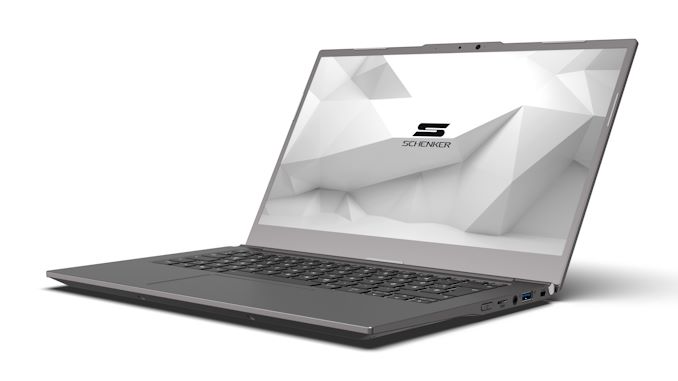
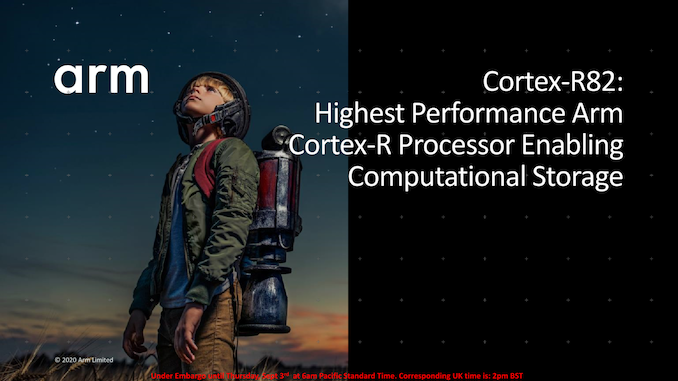
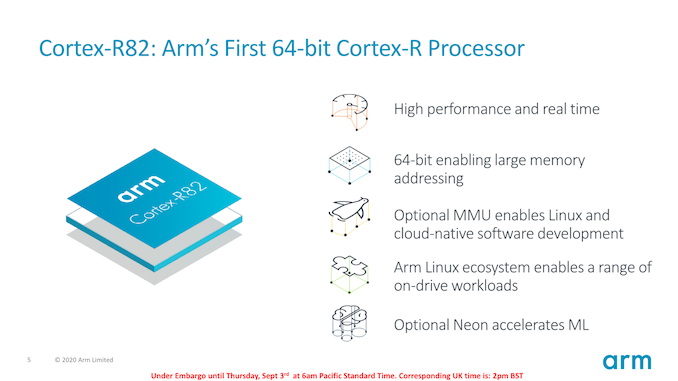
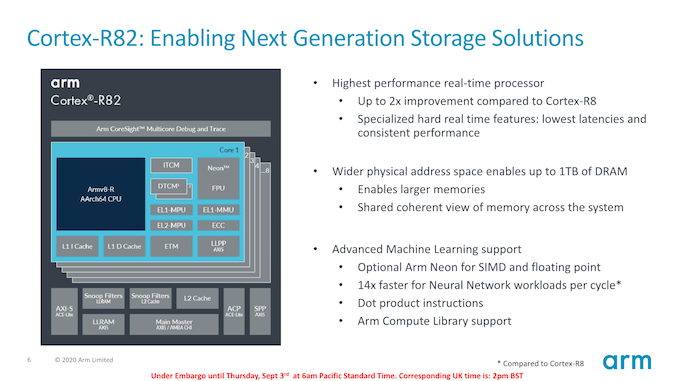
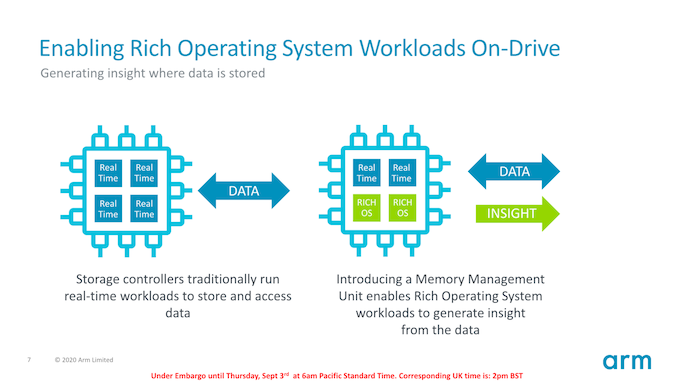
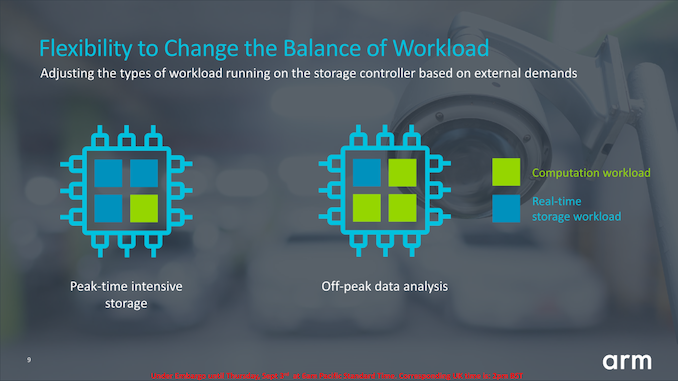

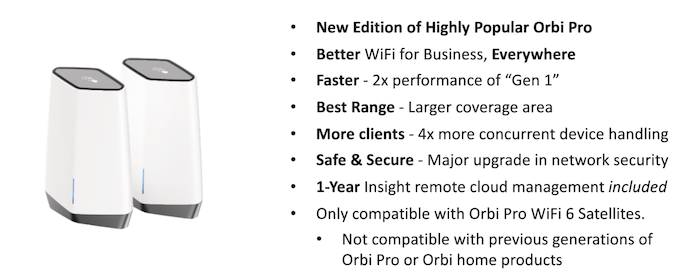
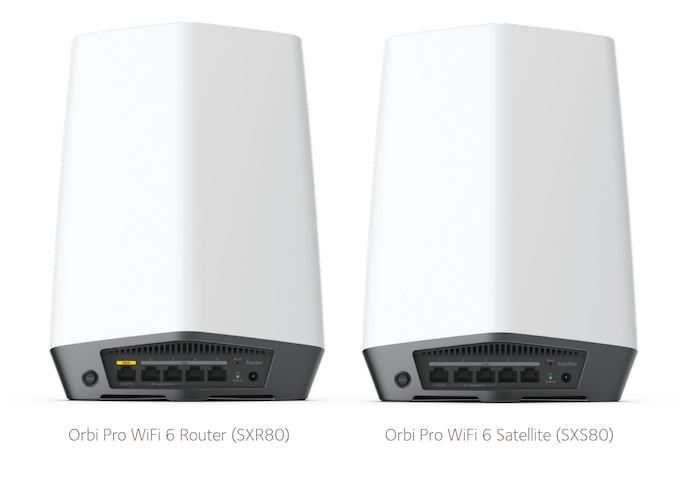

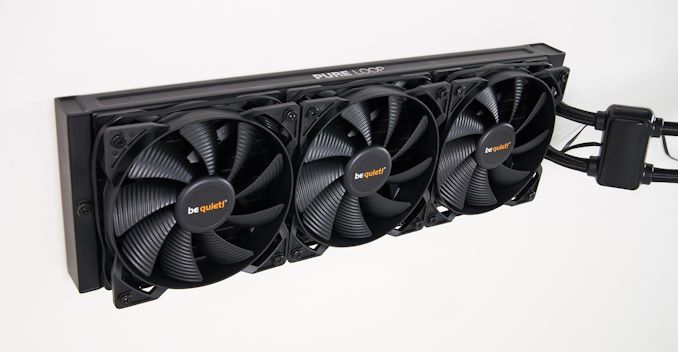
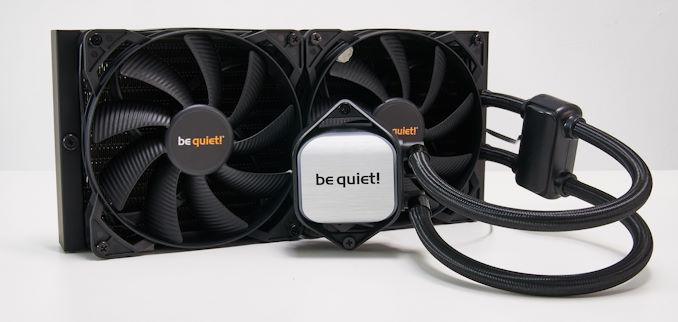
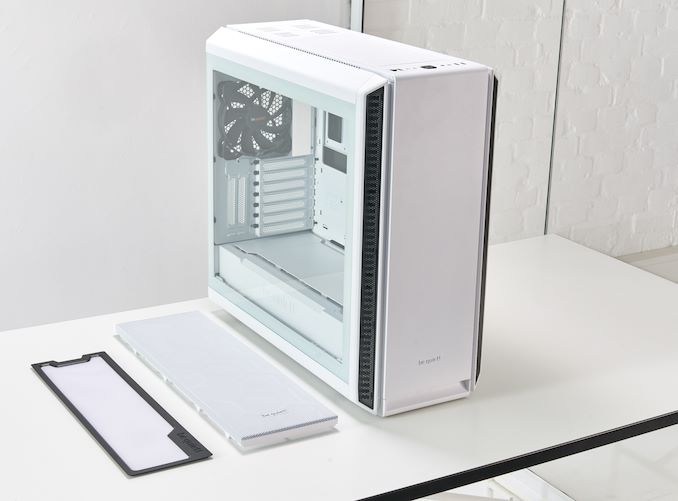
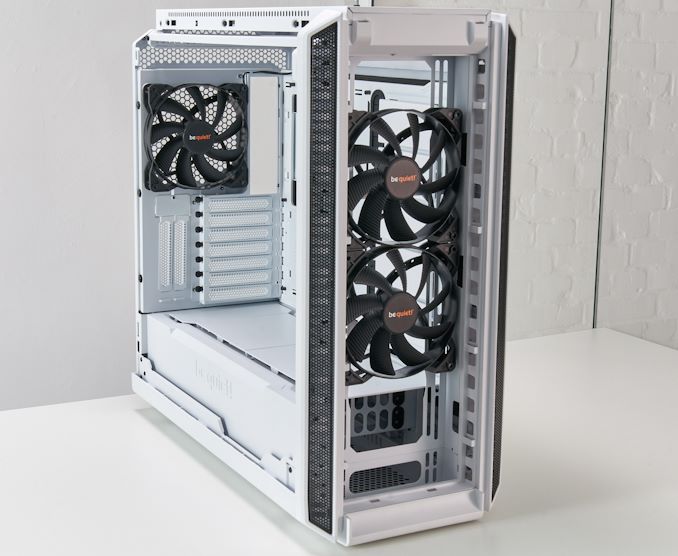
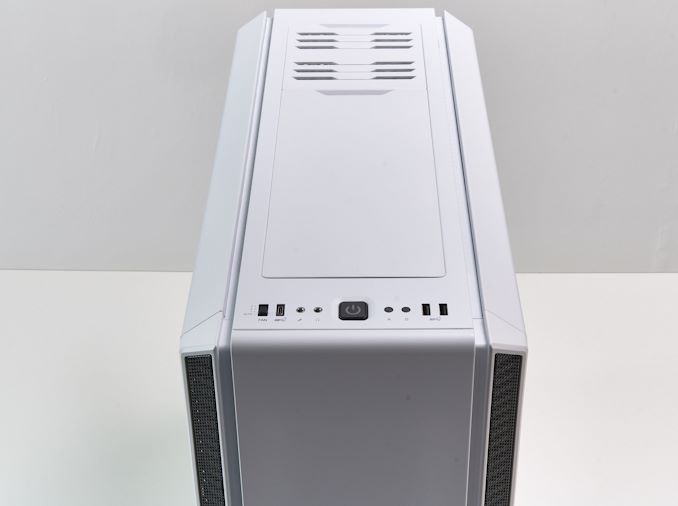

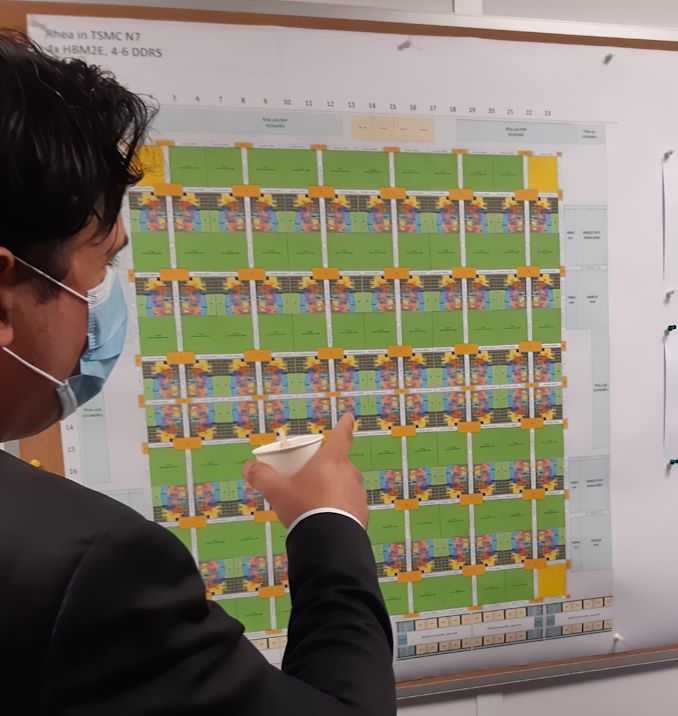
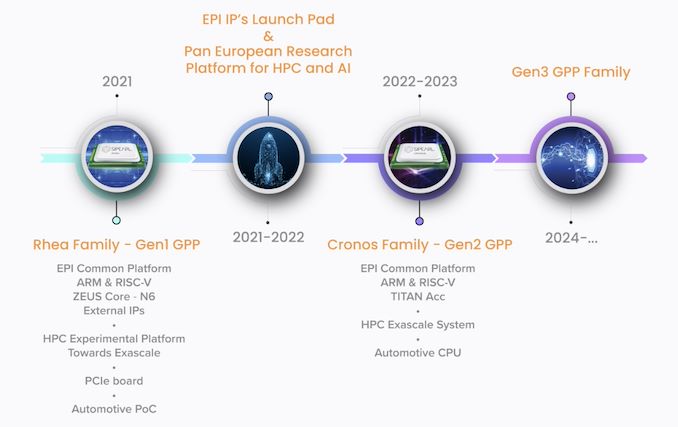
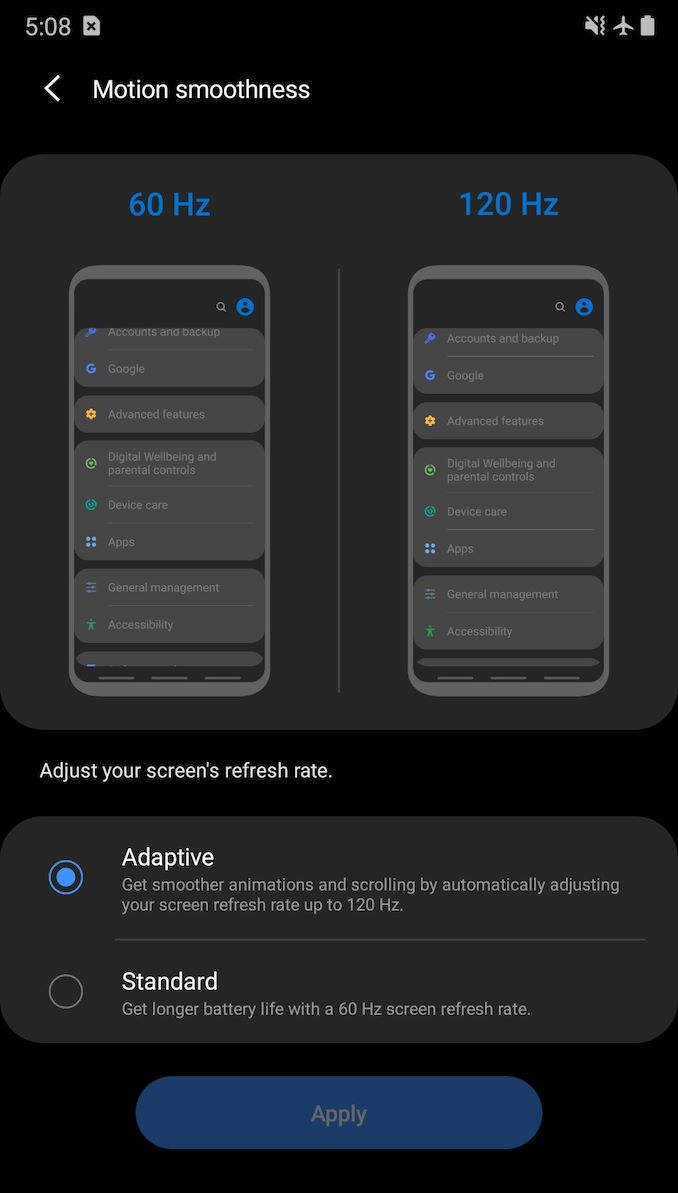
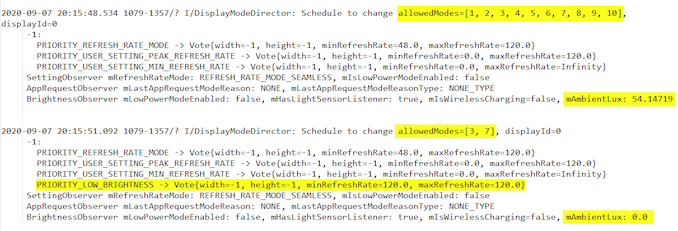
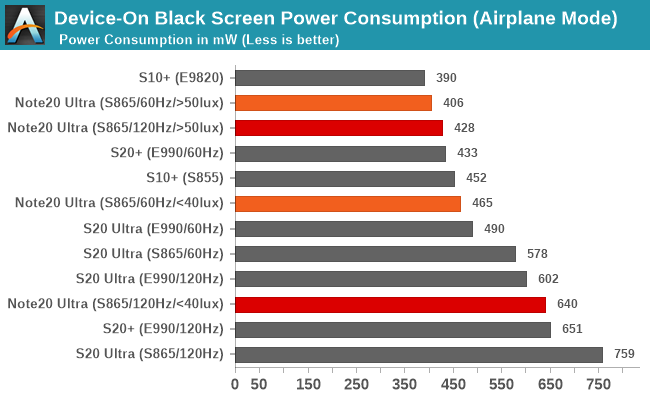

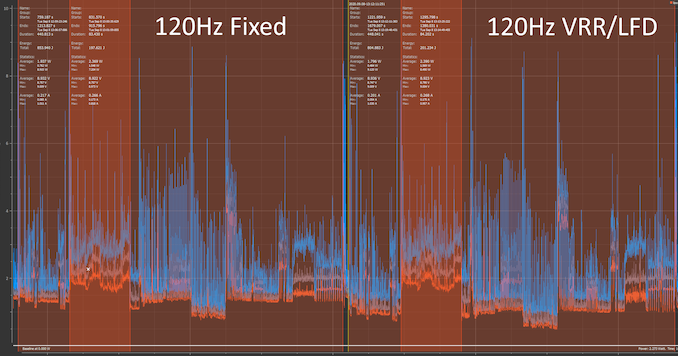
















Bookmarks